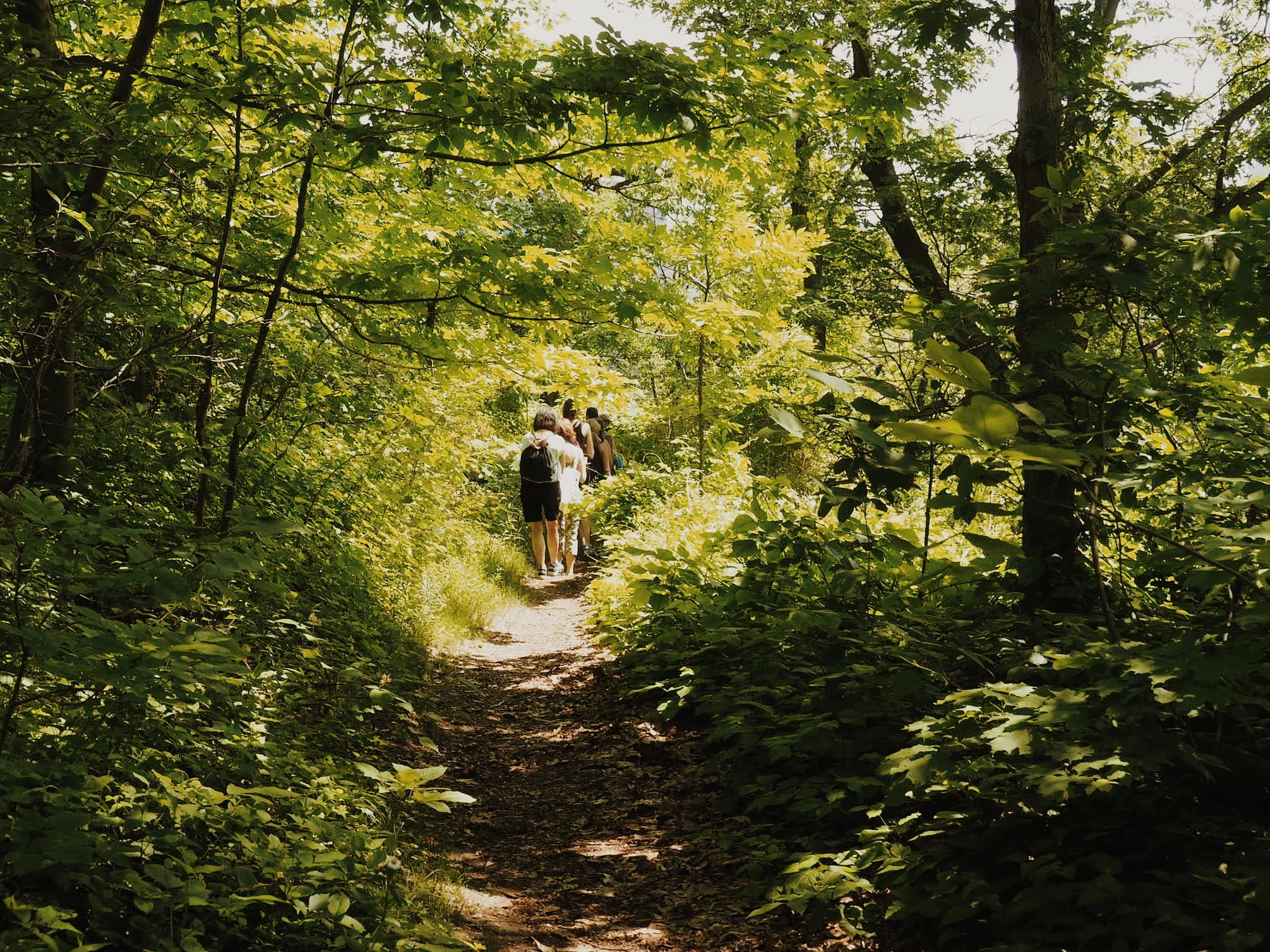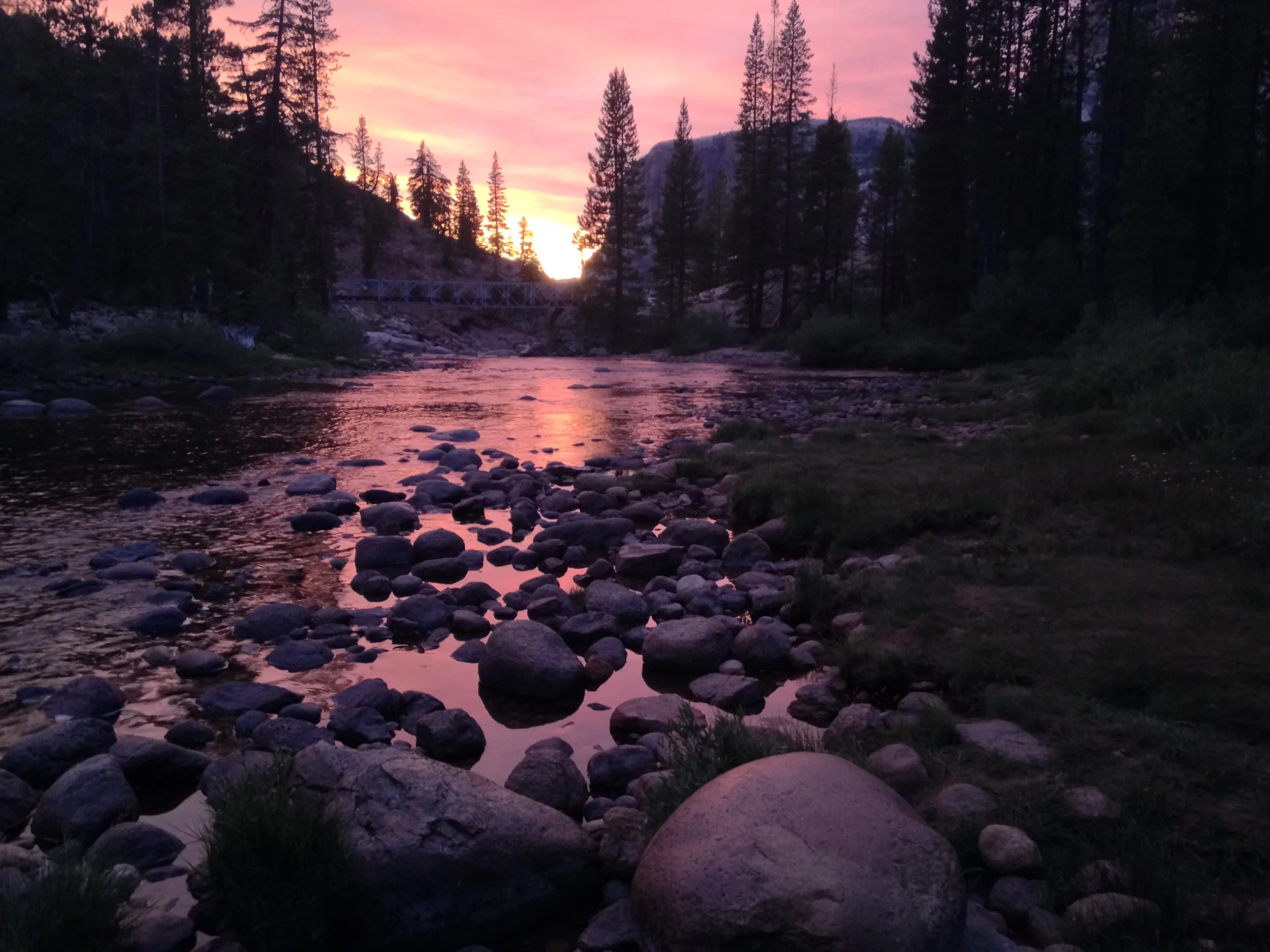A dream since the 1980's - Jamaica Bay Greenway now exists for both cyclists & pedestrians to explore.
A quick guide to surfing in NYC
Finding Fall Foliage at Gertrudes Nose in the Shawangunks
Hunter Mountain: Fire Tower Views and Delicious Brews
A few months ago, we heard about a new brewery hidden deeply in the Catskill Mountains. It seemed like a spot begging to be visited after a sweaty hike. After some basic map reading (NYNJTC Catskills Map 41), it looked like there was a parking lot just down the road from the brewery that connected to Hunter Mountain Fire Tower which at 4,040 feet, sounds like the perfect mix of a workout and some views.
PT 1: Hiking to Hunter Mountain Fire Tower
Park at the Hunter Mountain trailhead on Spruceton Road. The trailhead connects to the blue blazed Spruceton trail which is a straight (2,000 foot) shot up to the fire tower. After 2,000 feet of hiking up, you’ll reach the fire tower where you’ll enjoy incredible views of the surrounding region.
If you’re looking to extend your trip, the John Robb Lean-to is off a short spur trail on the way up. There are actually bunkbeds in the cabin next to the fire tower but they’re only available for local volunteers.
Here’s the truth: this is really not the best route up to the fire tower. The path is gravel and double track and there are other actual trail options you can take to get to the top. However, the parking is conveniently close to the brewery (scroll down for more).
Other options to get up to the Hunter Mountain Fire Tower include:
For a short and steep option, take the 4.7 Mile Beckman Trail
To make it easier, take the lift up to the top (3,200 feet) of Hunter Mountain Ski Resort ($14). From there, take the Colonel's Chair Trail 2 miles to the fire tower.
Another option is to create a loop with the Devil’s Path.
PT 2: Relaxing at Westkill Brewery
After our decent, we hopped into the car to check out Westkill Brewery, the inspiration for today’s hike choice. It’s a small brewery perched at the top of a hill just a minute off Spruceton Road. They really lean into their outdoorsy location, with antlers on the taps and maps galore.
We tried a Belgian Dubbel and their famous Kaaterskill IPA - both were delicious. The folks from Kingston Bread Lab were also on-site slinging fresh pizza’s so that didn’t hurt the vibe either. You can check out if they’ll have guest food purveyors on their instagram.
After leaving the brewery, we made one last stop at Newton Farm to pick up a few veggies before heading home.
Have you been to the fire tower or the Westkill Brewery? Let us know in the comments!
3 Reasons You Need to Explore the Greenbelt This Summer
NYC Trails Guide: The Best Hiking in Each Borough
The Five Best Places to Go Fly Fishing Near NYC
Skiing & Riding from NYC [no car needed]
Camping at Giant Ledge
An Introduction to the Shawangunks
Written by Elliot Becker
The Shawangunks (or more frequently, the Gunks), is the premier climbing crag in the Northeastern U.S. A number of factors conspire to make it so. First there is the location. Two hours from New York City and three to five from Boston, Philadelphia and DC means that for the entire BosWash Megalopolis, the Gunks is an accessible weekend trip for millions of people. The second factor is the quantity of climbing. The Gunks are composed of a number of continuous ridges that, in the case of the main ridge, the Trapps, extends for miles.
Hundreds of climbs are packed throughout this ridge, meaning that visitors have a wide range of routes available to climb in a small area. Adding to that you have the third factor: accessibility. Parking is relatively close to the Trapps, and a short steep walk takes you to well-maintained carriage road extending the length of the Trapps, with paths at intervals up the talus to the base of the wall. The final and most important factor of the Gunks’ virtues is the quality of the climbing. While many crags really shine at certain difficulty grades, the Gunks are composed of a wide range of routes that climbers at any skill level will find compelling. The Gunks are made of a quartz conglomerate, the most notable features of which are the ubiquitous horizontal cracks, ledges and roofs. As a consequence, even a beginning climber will often find themselves moving over airy and exposed routes more often associated with harder grades at other crags.
History plays a role in the importance of Gunks to climbing. The Gunks were first climbed by Fritz Wiessner in 1935. A short, bald German émigré, Wiessner cut a swathe of early first ascents across the U.S. and later the world. He was later joined by another Germanic emigree (from the former Austro-Hungary) Hans Kraus. The two of them put up many of the Gunks’ most classic routes between the 30s and 50s. During that period, grading was nonexistant or much less formal, and climbers climbed with boots or sneakers, protecting themselves with pitons hammered in place and ropes knotted around their waist. The most famous climb at the Gunks, High Exposure, was put up by Kraus in 1941. Because the routes were put up at a time when the grading scale did not go as high, and at a very different time climbing culture (the idea of climbing gym was decades in the future) they retain grades that often feel stiff compared with gyms or more recently developed crags.
The Gunks is almost entirely traditional (trad) climbing. While there is the occasional bolt as needed for protection, the Gunks have retained a very traditional ethic regarding bolting. Further, many of the climbs are two or three pitches. Notably, the Trapps are split for most of the length by the Grand Traverse (GT) Ledge, which allows climbers to maneuver between the lower and upper parts of the wall, and often to mix and match what parts of a given climb they want to do. Taken together, the Gunks is a great place to learn to lead and follow trad in a multi-pitch environment. However, anyone whose only experience is climbing in a gym or sport climbing is advised to get some professional advice before hitting the Gunks.
A good place to start or end a day of climbing at the Gunks is at the venerable local gear shop, Rock and Snow. Started by local climbers, it remains staffed by knowledgeable Gunks veterans. They can recommend whatever you need from gear to guides. In terms of guides, there is one company that has a bit of an advantage, Alpine Endeavors. Most of the Gunks are on a private preserve (one downside to climbing at the Gunks is that a daypass is $17, or $95 for an annual), but one of the most famous areas, Skytop, is part of the Mohonk Mountain House resort. Skytop is home to some of the most famous and historically ground breaking routes, like Foops, Supercrack, and Vandals. The only way you can climb there, though, is if you hire a guide from Alpine Endeavors, which has a deal with Mohonk Mountain House. So if you’re thinking of hiring a guide, you might consider shelling out a bit more so you can climb at Skytop; even if you’re buddies take you climbing in the future, they’re not taking you to Skytop.












![Skiing & Riding from NYC [no car needed]](https://images.squarespace-cdn.com/content/v1/5235cb72e4b01ae2ba612744/1452721314393-498H03PF309MIL7FFQBQ/image-asset.jpeg)












